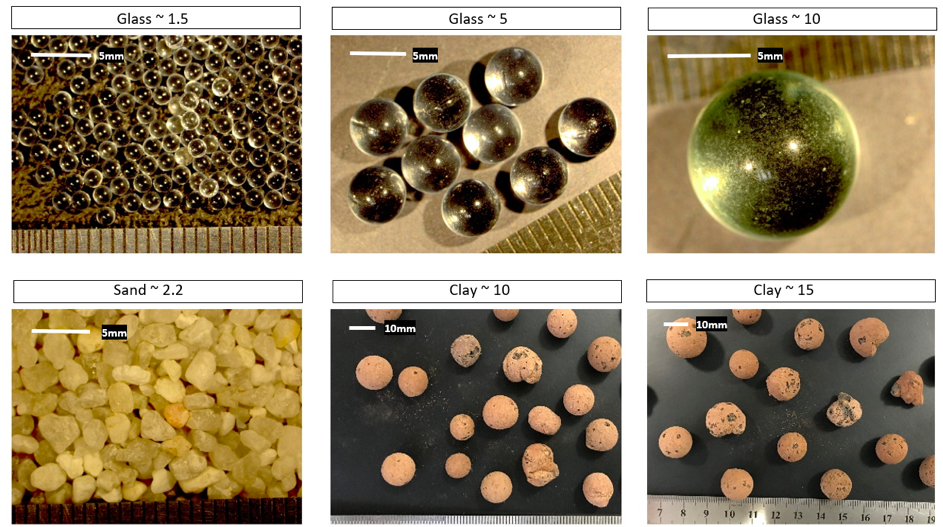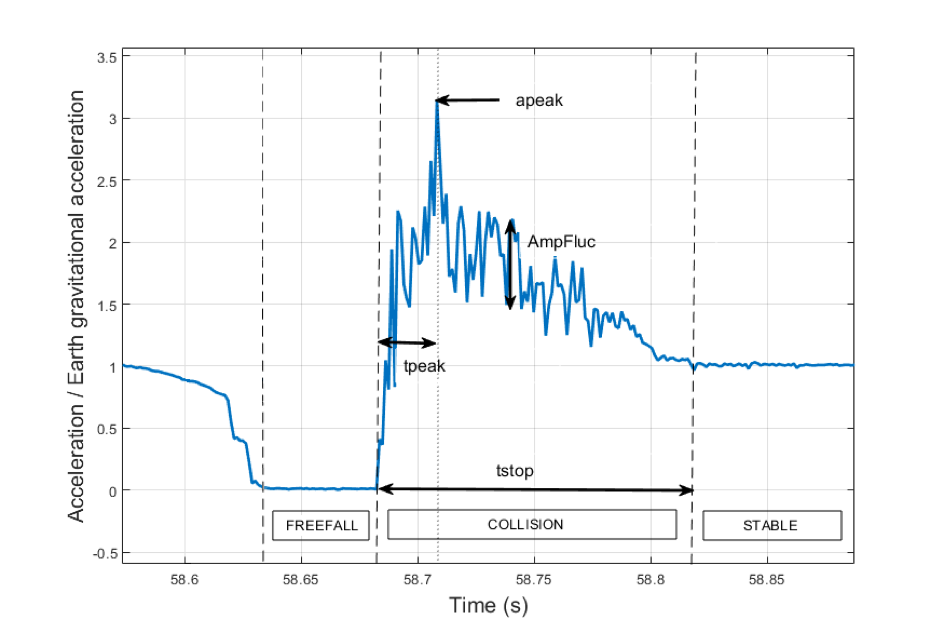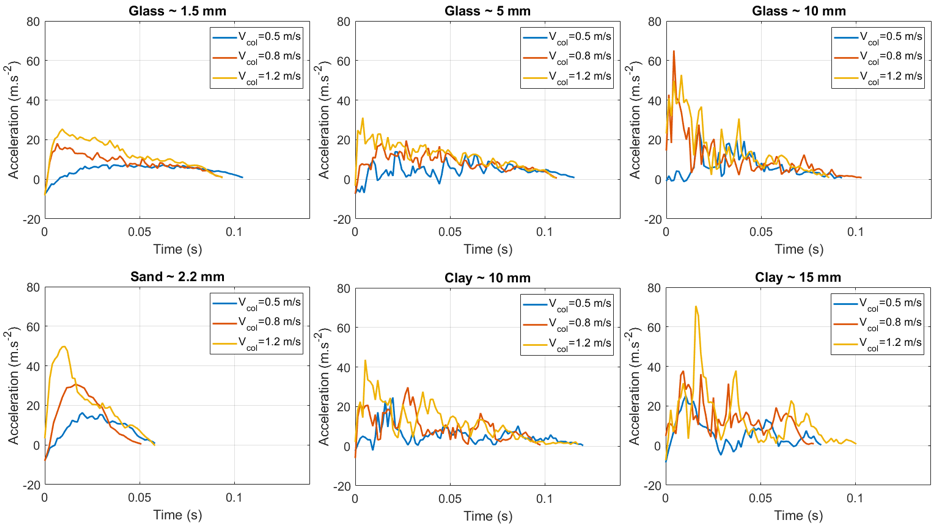What can we learn from an in-situ accelerometer during surface interactions?
- ISAE-SUPAERO, DEOS, Toulouse, France (naomi.murdoch@isae.fr)
Past, present and future small body missions include onboard accelerometers that are used either by main spacecraft during surface interactions such as sampling or touching the surface [1-2], or by lander packages deployed to the surface [3-6]. All surface interactions provide a wealth of information about the behaviour and the properties of surface materials but accelerometer data is particularly valuable. However, particular care must be taken to correctly account for the low gravity environment when interpreting the measurements. As long as the proper (Froude number) scaling is applied, the collision duration and penetration depth derived from the acceleration data can be used to infer surface properties such as the internal friction angle or the bulk density of the material [7].
Previous work has demonstrated the link between collision velocity and peak acceleration in both terrestrial and low-gravity experimental trials [8-9]. Here we will present recent experimental results investigating the link between accelerometer data and the surface properties. The collision velocity is adjusted by modifying the drop height of the projectile and impacts are performed into several different surface materials (Fig. 1).

Figure 1. The granular materials used in the experimental trials
To obtain the in-situ acceleration profile during the collision, we use a projectile that contains an accelerometer. We apply the same data processing for the accelerometer measurements as used in previous work [8-9] to extract the drop height (zdrop), the collision velocity (vc), the collision duration (tstop) and the peak acceleration (apeak). In addition, we also extract the time between the instant the projectile makes contact with the ground and the moment when the projectile is at its peak acceleration (tpeak), the mean amplitude of acceleration fluctuations after the peak acceleration, and the frequency of these fluctuations (Fig. 2). As noted in previous work [10,11], the acceleration profiles have a clear dependence on particle size (Fig. 3). In this talk we will present new experimental results and discuss the information that can be extracted from accelerometers about the surface properties during .

Figure 2: Typical profile measured by an in-situ accelerometer in a spherical projectile during an impact into granular material. See text for description of the variables indicated.

Figure 3: Acceleration profile during the impacts with different granular materials, and different collision velocities: 0.5 m/s (blue), 0.8 m/s (red), 1.2 m/s (yellow).
Acknowledgements
The authors acknowledge funding support from the European Commission's Horizon 2020 research and innovation programme under grant agreement No 870377 (NEO-MAPP project). This project also received funding from the Centre National d'Etudes Spatiales (CNES) and CS acknowledges PhD research grant funding from ISAE-SUPAERO.
References:
[1] Lauretta, D.S. and the OSIRIS-REx Team, 2021, March. The OSIRIS-REx Touch-and-Go Sample Acquisition Event and Implications for the Nature of the Returned Sample. In Lunar and Planetary Science Conference (No. 2548, p. 2097).
[2] DellaGiustina D., et al. 2022, OSIRIS-APEX: A PROPOSED OSIRIS-REX EXTENDED MISSION TO APOPHIS, Apophis T-7 Years 2022 (LPI Contrib. No. 2681)
[3] Lorenz, R.D., et al. 2009. Titan surface mechanical properties from the SSP ACC–I record of the impact deceleration of the Huygens probe.
[4] Biele, J., Ulamec, S., Maibaum, M., Roll, R., Witte, L., Jurado, E., Muñoz, P., Arnold, W., Auster, H.U., Casas, C., Faber, C., and others, 2015. The landing (s) of Philae and inferences about comet surface mechanical properties. Science, 349(6247), p.aaa9816.
[5] Michel et al., 2022, The ESA Hera mission: Detailed characterisation of the DART impact outcome and of the binary asteroid (65803) Didymos, The Planetary Science Journal (accepted)
[6] Michel, P., et al. 2022, The MMX rover: performing in situ surface investigations on Phobos. Earth Planets Space 74, 2
[7] Sunday, C., et al. 2022. The influence of gravity on granular impacts-II. A gravity-scaled collision model for slow interactions. Astronomy & Astrophysics, 658, p.A118.
[8] Murdoch, N., et al. 2017. An experimental study of low-velocity impacts into granular material in reduced gravity. Monthly Notices of the Royal Astronomical Society, 468(2), pp.1259-1272.
[9] Murdoch, N., et al. 2021. Low-velocity impacts into granular material: application to small-body landing. Monthly Notices of the Royal Astronomical Society, 503(3), pp.3460-3471.
[10] Clark et al., 2013, Granular impact dynamics: Fluctuations at short time-scales, AIP Conference Proceedings 1542, 445-448
[11] Duchêne, A., et al. 2022, A Machine Learning Approach For Estimating Asteroid Surface Properties from Accelerometer Measurements, Lunar and Planetary Science Conference 2022, no. 1563
How to cite: Murdoch, N., Duchêne, A., Segovia-Otera, J., Drilleau, M., Stott, A., and Sunday, C.: What can we learn from an in-situ accelerometer during surface interactions?, Europlanet Science Congress 2022, Granada, Spain, 18–23 Sep 2022, EPSC2022-910, https://doi.org/10.5194/epsc2022-910, 2022.

